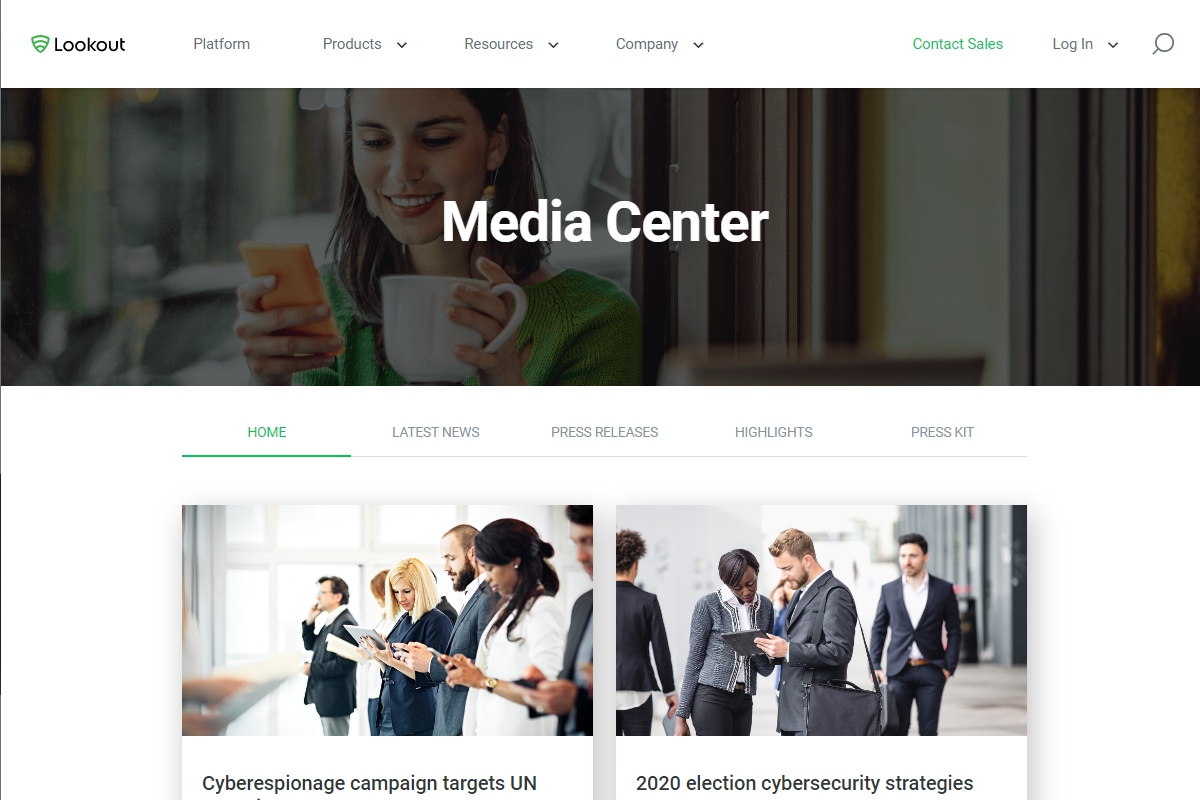Next, they built 9-10 page types to build their web pages. Chitkara said this provided extreme flexibility to the design team – one of the biggest achievements of this redesign project.
Lookout also uses the Ingeniux Lucene API to provide a robust Ajax-based search page offering real-time results, and the ability to exclude topics or content based on taxonomy.
There are a couple of ways taxonomy is leveraged. First, they use a functional taxonomy to exclude or remove content from search or other resources. Second they use functional tags like resource type or content topic to tag their content so that it automatically shows up on defined pages. This approach enables them to grow the taxonomy as Lookout grows. Chitkara said the taxonomy capability in Ingeniux CMS was very straightforward and easy to use.
Why Ingeniux?
Bermudez and Chitkara both came from a company that used Ingeniux CMS. They knew it was the CMS platform they wanted to use for Lookout for a couple of reasons:
- Ingeniux makes them flexible from a global standpoint and going forward this would be extremely useful.
- Ingeniux has a partnership with language translation and localization technology firm Venga, a firm they planned to work with.
At Lookout, they decided to build their website using the Dynamic Site Server (DSS) to quickly publish content. Using DSS, publishing time was reduced to 3-4 seconds and all content assets are versioned, both improvements compared to how they used Ingeniux in the past. Using the DSS, Lookout has two publishing targets: Staging and Production. Content is first published to Staging where it is reviewed and approved, and then published to Production.
The Lookout website works with Akamai CDN and is responsive, so it works on all devices.
Lookout now looks forward to moving to Ingeniux 10 and using the improved Digital Asset Management capabilities, where all assets were versioned and tracked.
Challenges and Opportunities
Both Bermudez and Chitkara have seven to eight years' experience with Ingeniux CMS, so they understood how it worked. Still, there were some challenges. First, the designs they created were nice, but they were complicated, and the go-live timeline was short. It took some time to turn the designs into HTML templates. This isn't a technical challenge but shows how much work can go into the proper transformation of designs.
It also took some time to understand how the modular architecture would work. Out of the box, Ingeniux uses Bootstrap or Foundation frameworks, but the Lookout team wanted to use Materialize because their designs worked well with it. Ingeniux can support different frameworks, but there was a learning curve around this new framework. In the end, thanks to a team effort between both Ingeniux and Lookout, everything worked out well.
Lookout also required a number of customizations to the Lucene API.
Finally, Lookout wanted to monitor its website using its security tools. This required integration between Lookout's managed instance of Ingeniux CMS and its cloud-based security environment.
Finding Success Through Great Relationships and Collaboration
The relationship between Lookout and Ingeniux was collaborative, allowing Ingeniux to come through in many ways. One example was a go-live issue that was determined not to be the fault of the Ingeniux implementation, but still the Ingeniux team worked hard to help resolve it as quickly as possible.
Bermudez said that the Ingeniux team worked the same as they did - "...recognize there's a problem and get to a solution as quickly as possible. No pointing fingers, let's just get the job done."
In all, the project took about 10-12 weeks which Bermudez recognized was an aggressive timeline. "The Ingeniux platform is 24 times less expensive than the most expensive CMS. This system brings more value than a system like that," said Bermudez.
For Lookout, it is critical to get systems in place that will help them grow quickly. Ingeniux is one of these systems.







